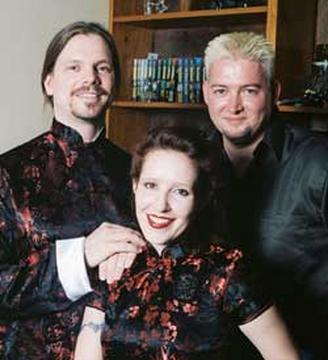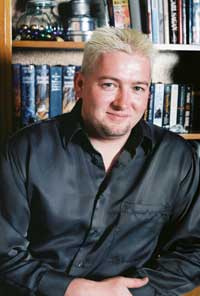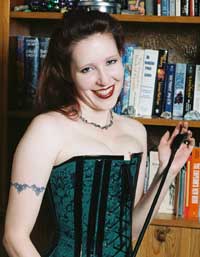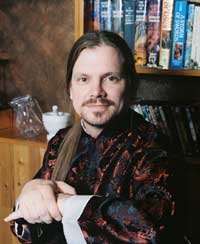

Home - Forums - Contributors - About - How to Listen - Contact - Links - Aural Icebergs





When first envisioned, the idea behind Intellectual Icebergs was to get very intelligent people to make interesting conversation about technically complex concepts. As the production of the show progressed, the scope broadened to cover topics of social complexity, and to help these guests relate their knowledge in a more accessible manner. Jim Vance's friendly, congenial manner of asking questions was a great addition to the show, both by acting as an excellent foil for the conversations, and by providing us with a better handle on the kind of information that people are interested in on any particular topic.
The interludes are something that we threw in for the purpose of pacing. Robert has a collection of short subject writings that has never really had an outlet, so we decided to turn them into short spoken word presentations set to music. We're glad we did because they've become one of the most popular portions of our show.
In order to protect the interests of our contributors, Intellectual Icebergs is released under a Creative Commons license. Reproduction and reuse is allowed, but not for commercial purposes. Full attribution must be provided with any use. Any reuse of our work must be under an identical license.

This work is licensed under a Creative Commons Attribution-NonCommercial-ShareAlike 2.5 License.
Our Staff
 |
Jim Vance, PersonalityJim, our host, is a conundrum. Motorcycle squee, movie freak, and something of an uber-geek, Jim is somewhere between trying to become a modern renaissance man and plotting to take over the world. When he's not involved in some social or political tirade on a forum somewhere, you can find him reading about serial killers, history, or some Asimov-ian world, online squibbing wannabes at first person shooter games, riding his motorcycle with a shit-eating grin on his face, watching some obscure movie, or (live in fear) testing the new and untouched waters of the dating world. |
Tiffany Rapplean, Co-Producer and GuestTiffany is a geek of the technical training and instructional design variety, though she also enjoys web development and will happily regale you with her Unix system administration experience unless you stop her. Tiffany’s interests include learning Kenpo, helping Robert Rapplean with his latest plots and schemes, preparing their two young daughters to take over the world, and reading on a variety of topics including adult learning theory, vampire mythology, and politics. You can find Tiffany speaking from time to time with the Intellectual Icebergs host, Jim Vance, or you may find her blasting and healing in City of Heroes. |
 |
 |
Robert Rapplean, Co-Producer and GuestRobert is, among other things, a software engineer, a political analyst, a martial artist, philosopher, social engineer, and podcast producer, not necessarily in that order. His favorite hobby is to talk his friends into participating in his wacky ideas like podcasting and creating a martial art around the use of the batleth. |
The Zen Room

This is where we record our podcasts. Our recording involves two Behringer B-1 microphones plugged into a UB802 mixing board. This passes through a T1952 Tube Composer (compressor), which levels out the signal so we don't have to do so much post-production work. It's then passed into a Yamaha UW10 USB AtoD for conversion into digital sound, and into whatever laptop happens to be sitting on the USB hub/cooling pad a the moment. We also pass an audio feed out of the Yamaha into a Behringer HA8000, which allows up to eight people to listen to the show simultaneously, although it's generally just Jim, his guest, and whoever is doing the sound engineering.
We use Audacity to record our podcasts, to edit all extraneous noises out of the resulting wav file, to adjust final levels, and to mix in our chosen music. We then use Poikosoft's Easy Audio File Converter (which earns the name admirably) to convert the final wav to an mp3. We currently spend about fifteen man-hours per episode, not counting music search time, but we're learning ways to reduce that without sacrificing quality.